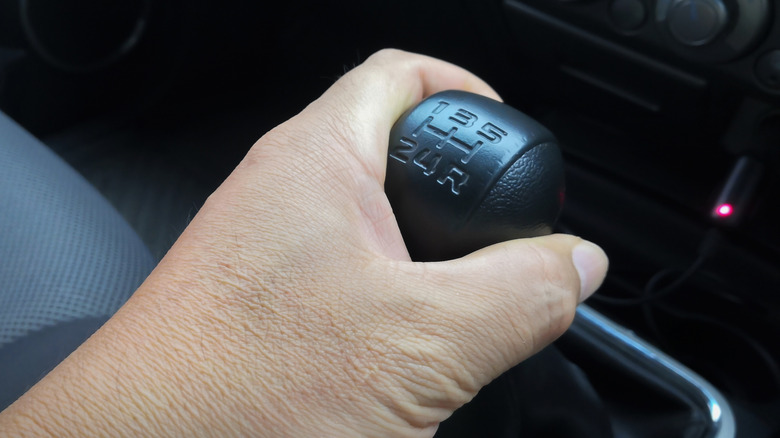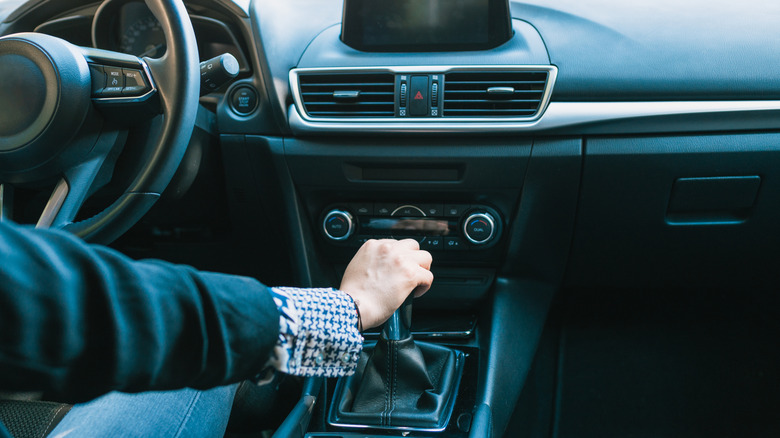Manual Driving 101: How (And When) To Use The Neutral Gear
The neutral (N) gear in a manual transmission vehicle is not exactly a gear like first (1), second (2), third (3), or reverse (R). Placing the shift lever in neutral means the transmission is not engaged in any gear, as if the clutch pedal was fully depressed. You're not going to use neutral often in any car, but it's important to know when shifting into neutral can help. With a stick shift vehicle, you'll want to follow similar guidelines to using neutral in an automatic transmission car. Neutral fully disengages the transmission from the engine and should be used when the car is stopped, moving very slowly, or when you're turning the car on and off.
If it's parked so you can change the oil yourself or replace the brake pads, shift it into first or reverse and set the parking brake before putting your hands anywhere near it. If the stick is in the middle of the H-shift gate, the transmission is in neutral and the car will behave as if the clutch is fully down. An easy way to tell if you're in neutral is to move the stick from left to right without depressing the clutch pedal or moving the shift lever front to back. If there's no resistance and the stick centers itself when you take your hand away, the transmission is in neutral. Some newer cars have gear indicators on the dashboard, but the wiggle test is generally reliable and works with the car off.
When to use neutral in a manual car
Make sure the transmission is in neutral before starting or stopping the engine, even if your foot is on the clutch. Neutral is also a manual driver's friend when navigating city streets, such as when stopped at a red light, stop sign, or in traffic. Releasing the clutch and putting the transmission in neutral while the car is stationary will provide some relief to your tired left leg. It can also help prolong the life of parts like clutch release bearings and hydraulic components, provided you don't rest your foot on the clutch pedal. If you're trying to push-start a manual car with a weak or dying battery, put the car in first or second gear with the clutch down before moving the vehicle and popping the clutch.
Otherwise, the flywheel won't turn and the car won't start. The stick should be in neutral whenever attempting to restart the engine with the key while the car is moving, an emergency maneuver that can come in handy if the engine stalls or dies while driving. You'll also want to put the transmission in neutral while being pulled or pushed through an automated car wash or when your vehicle is being winched or towed. Neutral is also helpful if you have to push your car, but a parked manual transmission car should be in gear with the front wheels pointed toward the curb.

